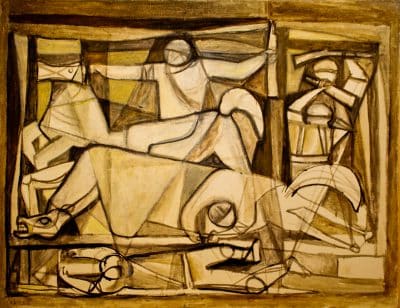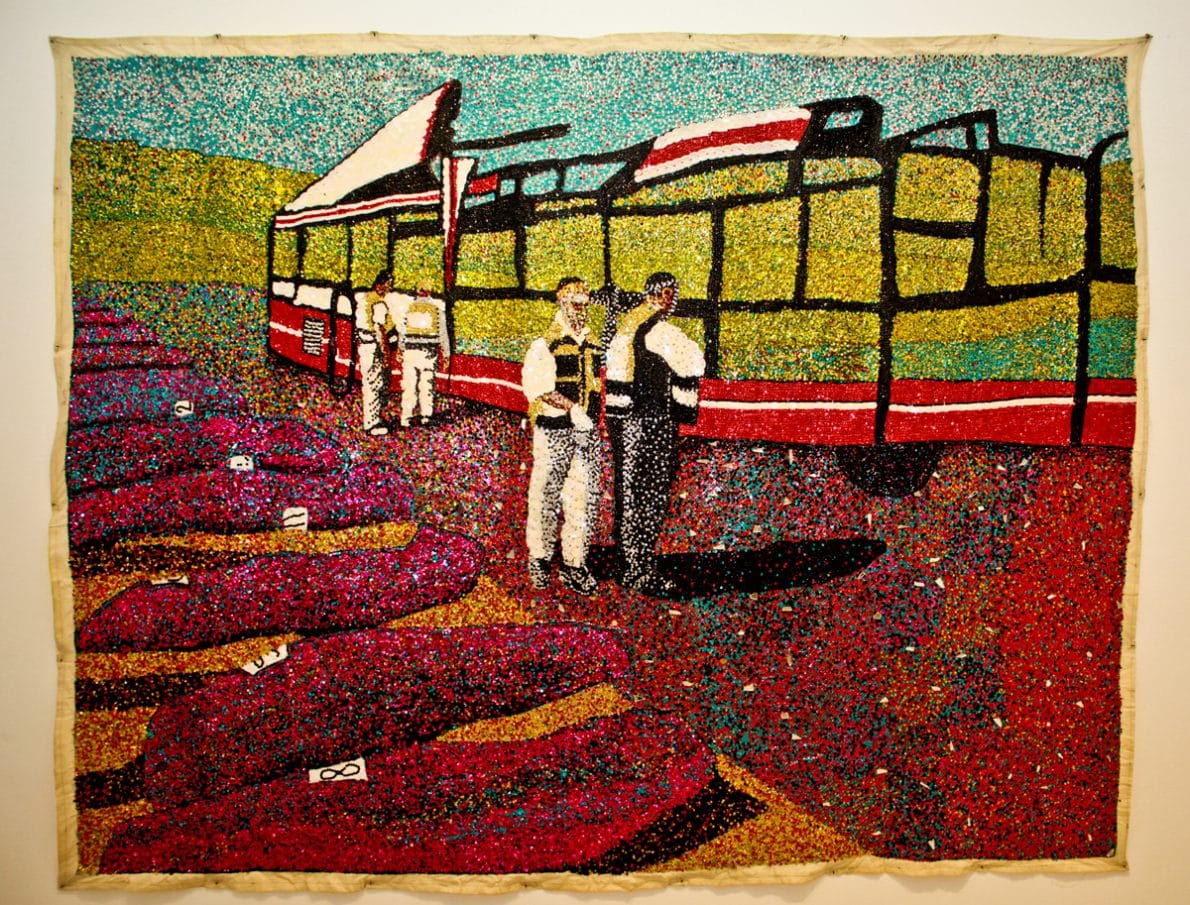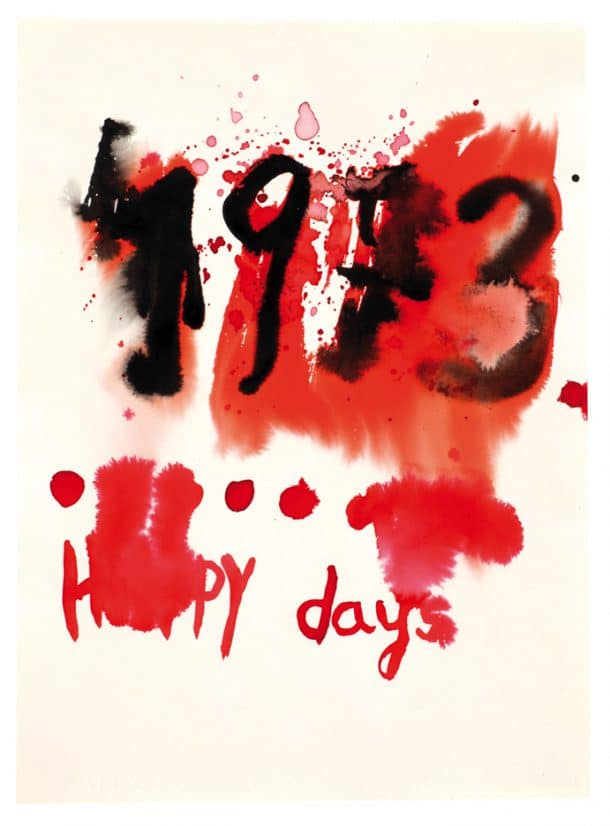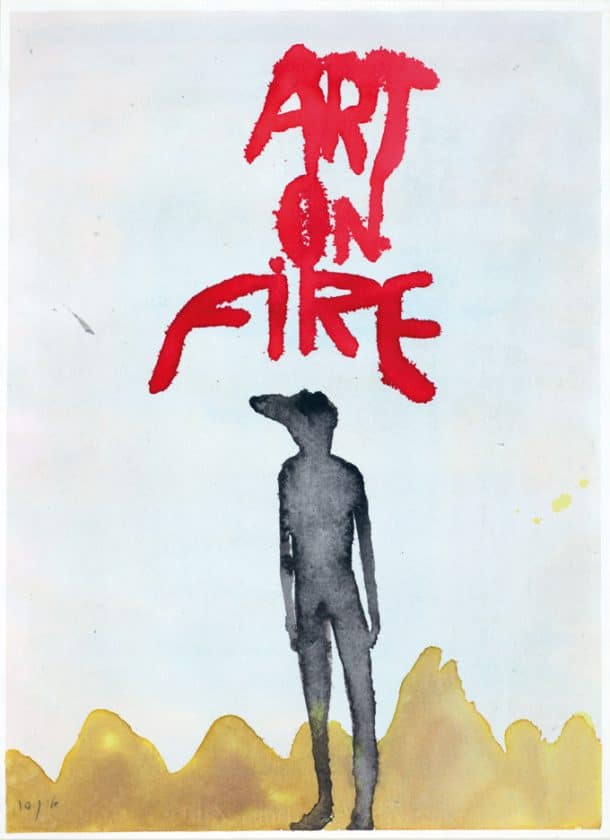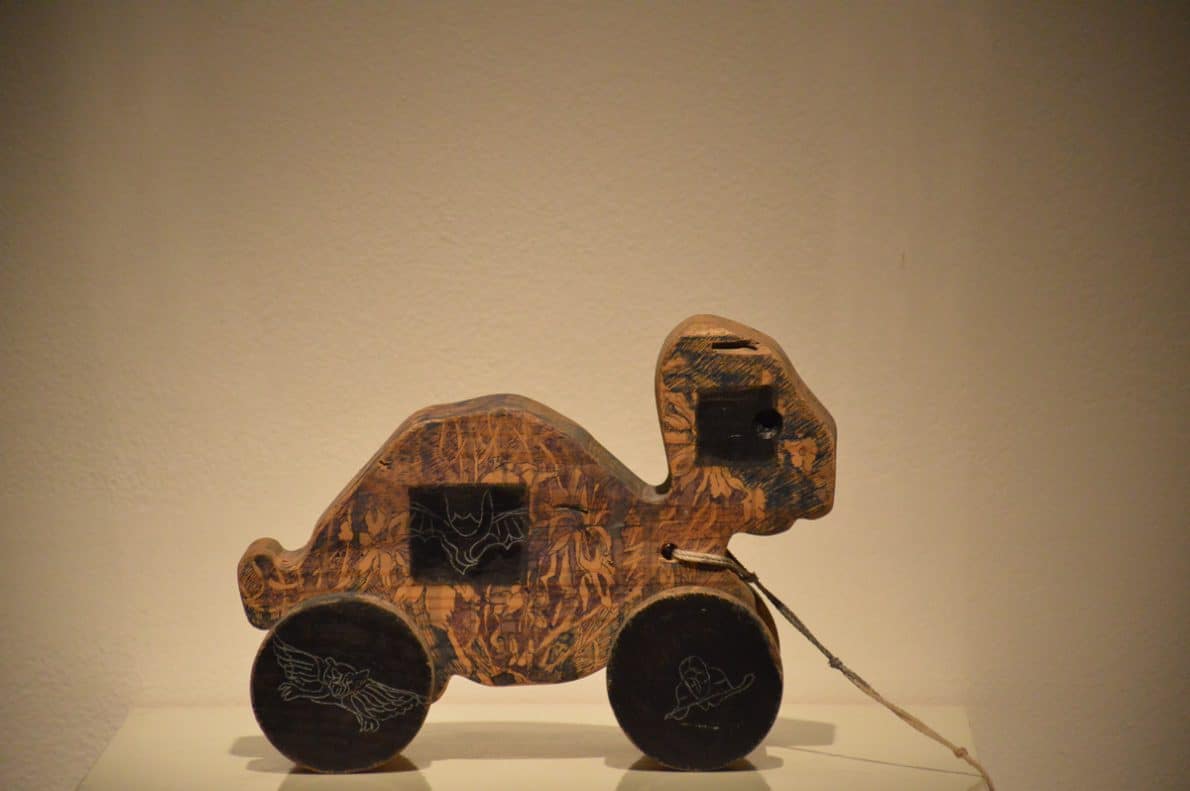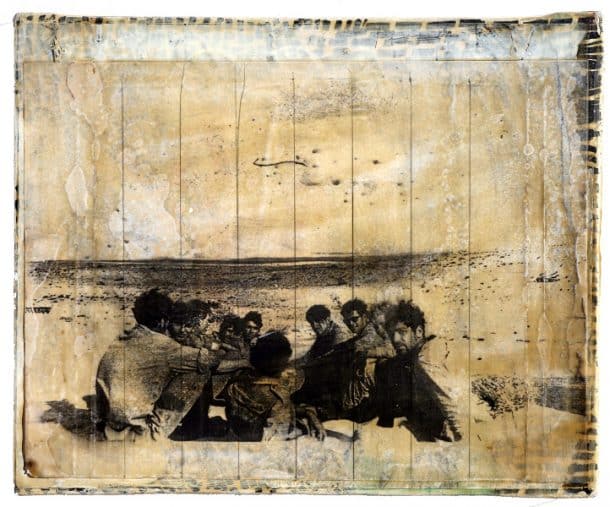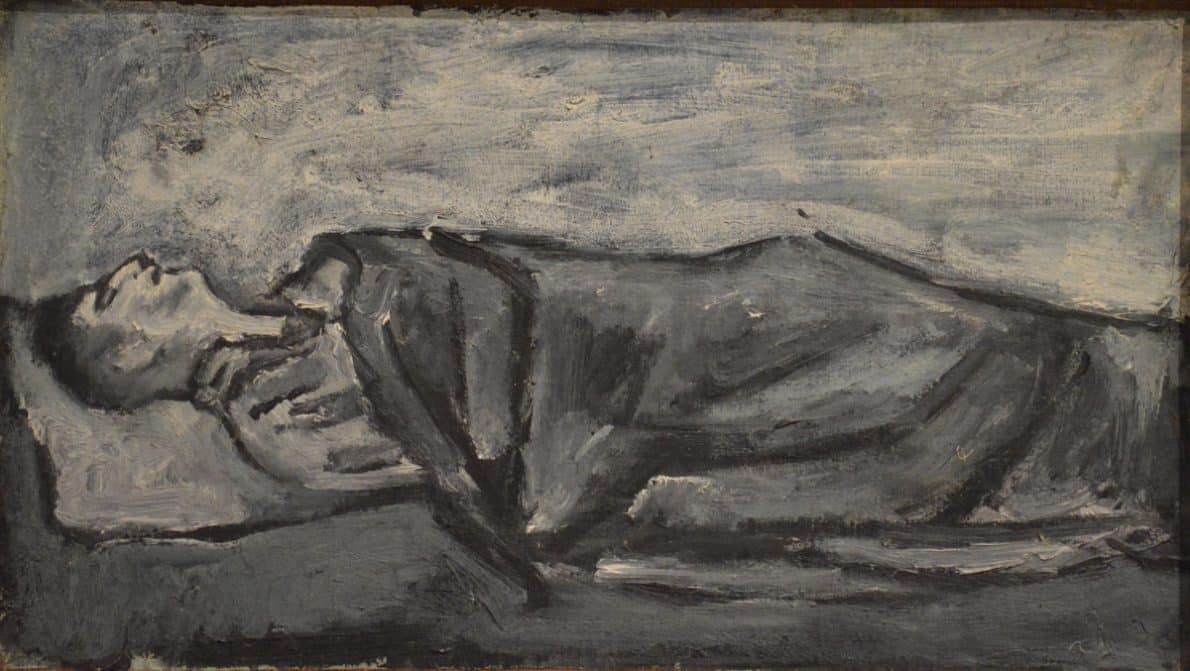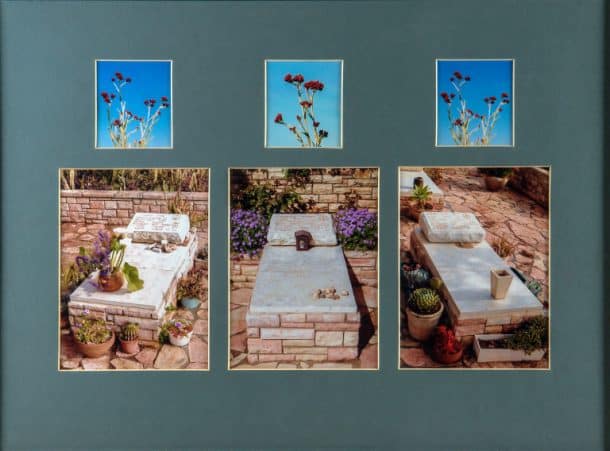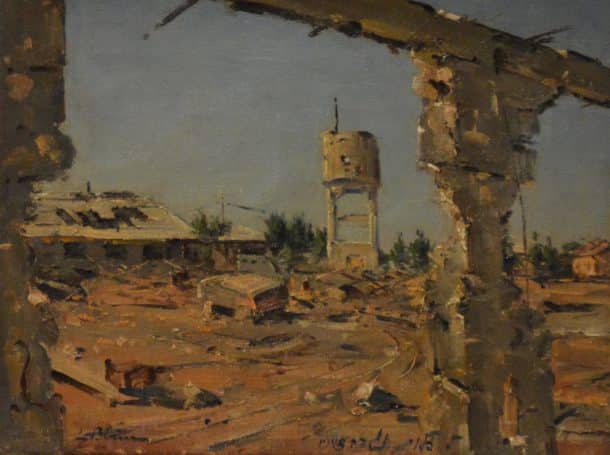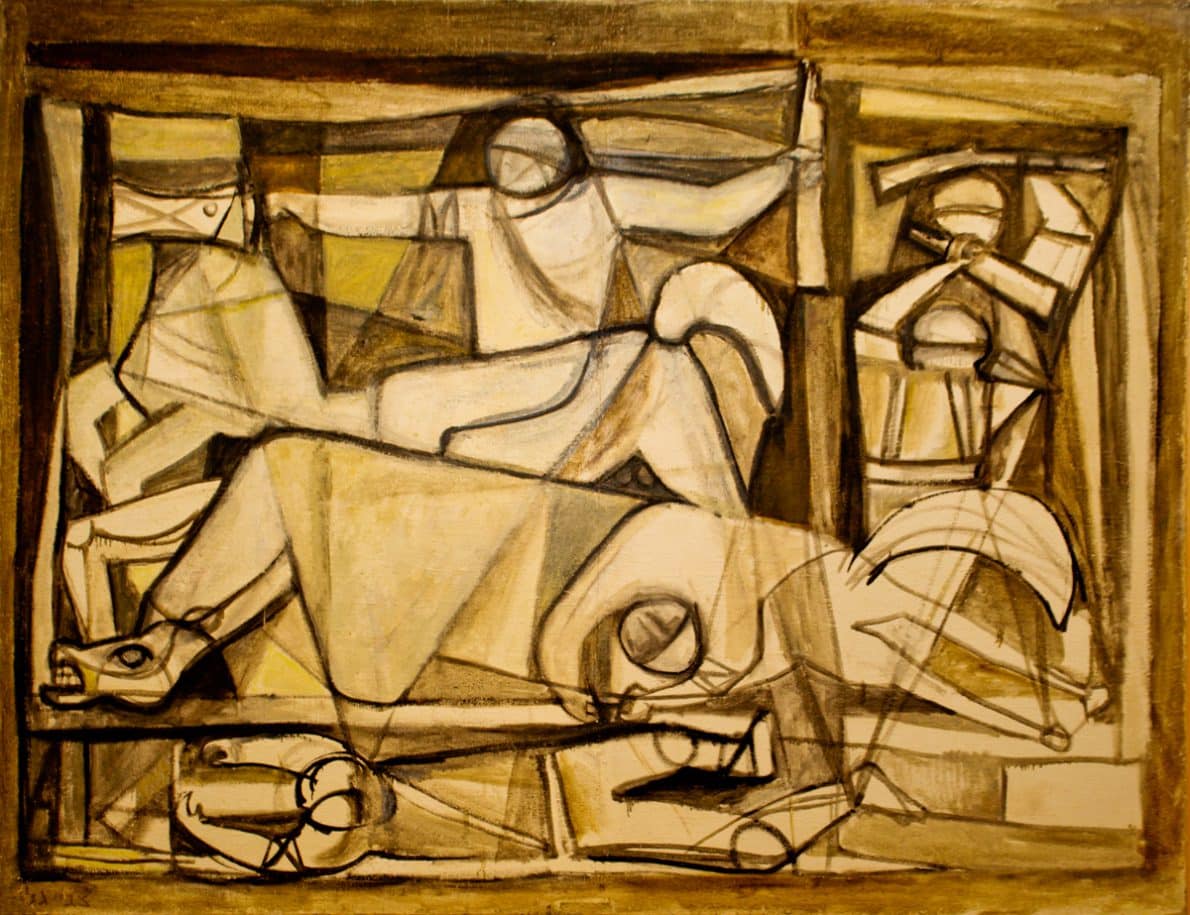Forty years after the Yom Kippur War, its effects on Israeli society are still unclear: an uneasy silence enfolds the stories of soldiers who fought in it, and the reactions among civilian Israelis. The exhibition's title is taken from the 'Red Everlasting' flower, known in Hebrew as Blood of the Maccabees. On Israel's Memorial Day, the flower is used to symbolize the fallen.
The exhibition Blood of the Maccabees: Memory and Bereavement in Israeli Art is dedicated to the artistic response in Israel to war and its painful effects – the anxiety, the atrocities of war, bereavement, mourning, and remembrance – though not only the Yom Kippur War: the exhibition also presents works created during and following the War of Independence, the Six-Day War, the Lebanon War, and the Intifada. Works by 33 men and women artists, produced in various media, are displayed throughout all the museum’s spaces, including its façade, and are grouped into a number of themes.
The themes of myth and memory are presented on the ground floor. Myth – an ideal meta-narrative that is passed down through the generations, in which a society narrates its chronicles to itself – focuses here on warriors’ heroism. The value of sanctifying sacrifice for the common good has been shaped through artistic, poetic, and literary means, by the War of Independence generation – warriors and artists alike. Using existing models, such as biblical imagery, Picasso’s masterpiece ‘Guernica’, or the motif of the wounded soldier, enables artists to stylize their harrowing experiences and transform them into a symbol. Soldiers’ physical and psychological wounds are transformed and expressed directly in later works, by artists who fought in the Yom Kippur War.
On the second floor, the first room is dedicated to the ‘children’s room’ – and the modes in which bereavement and the memory of war become integral to the everyday life of children, mothers, and families. Childhood overshadowed by the father’s loss merges into Israeli childhood through an assortment of Israeli war-related toys. Outside the home too, on trips around the country, children encounter weapons utilised as monuments,that sometimes become play and recreation sites.
The transition from home to the battlefield, the next section’s theme, is a fast and acute one. Shown here are scenes of war, grim scenes of battle, stress and pain that often remain indelibly etched in the warrior-artists’ bodies and souls for prolonged periods. Created with documentary materials, or from recollection, those impressions can be realistic, abstract or stylised – and are artistically reconstructed many years later, crystallising into the memory of war.
The exhibition’s closing section is devoted to the pain of bereavement and remembrance, and it also returns to the artists of the War of Independence. It is suffused with an ambience of sorrow and separation: artists who lost their sons, soldiers who lost their comrades.
Blood of the Maccabees is an exhibition which presents artists from different generations who responded to and shaped the memory of war. It seeks to emphasise their common denominator and also to indicate changes that have occurred in attitudes to the subject; to offer reflection, identification, and perhaps consolation too.
Guest Curator:
Dr Miri Gal Ezer
Nirit Dahan
Ronit Agassi, Shay Aloni, Asad Azi, Ludwig Blum, Yuval Caspi, Drora Dominey, Ester Eisen, Abba Fenichel, Zvi Gali, Aharon Giladi, Shoshana Heimann, Erez Israeli, Zvika Kantor, Eli Koplevitch, Jacob Lapid, France Lebbe-Nadav, Eugene Lemay, Haim Maor, Vered Nachmani, Efrat Natan, Miri Nishri, Shmuel Ovadyahu, Israel Paldi, David Reeb, Menachem Shemi, Dina Shenhav, Miron Sima, Merav Sudaey, Yvette Szupak Thomas, Moshe Tamir, Igael Tumarkin, David Wakstein and Shraga Weil.
Petach Tikva Museum of Art
Museum of Art, Ein Harod
Presler Private Museum, Tel Aviv
Monique Harel
Avi Ben Yakar
Ludwig Blum's Family
Dvir Gallery
Hezi Cohen Gallery
Zemack Gallery
The Artists
Be'er Sheva municipality
Kivunim
Ministry of Culture and Sport

